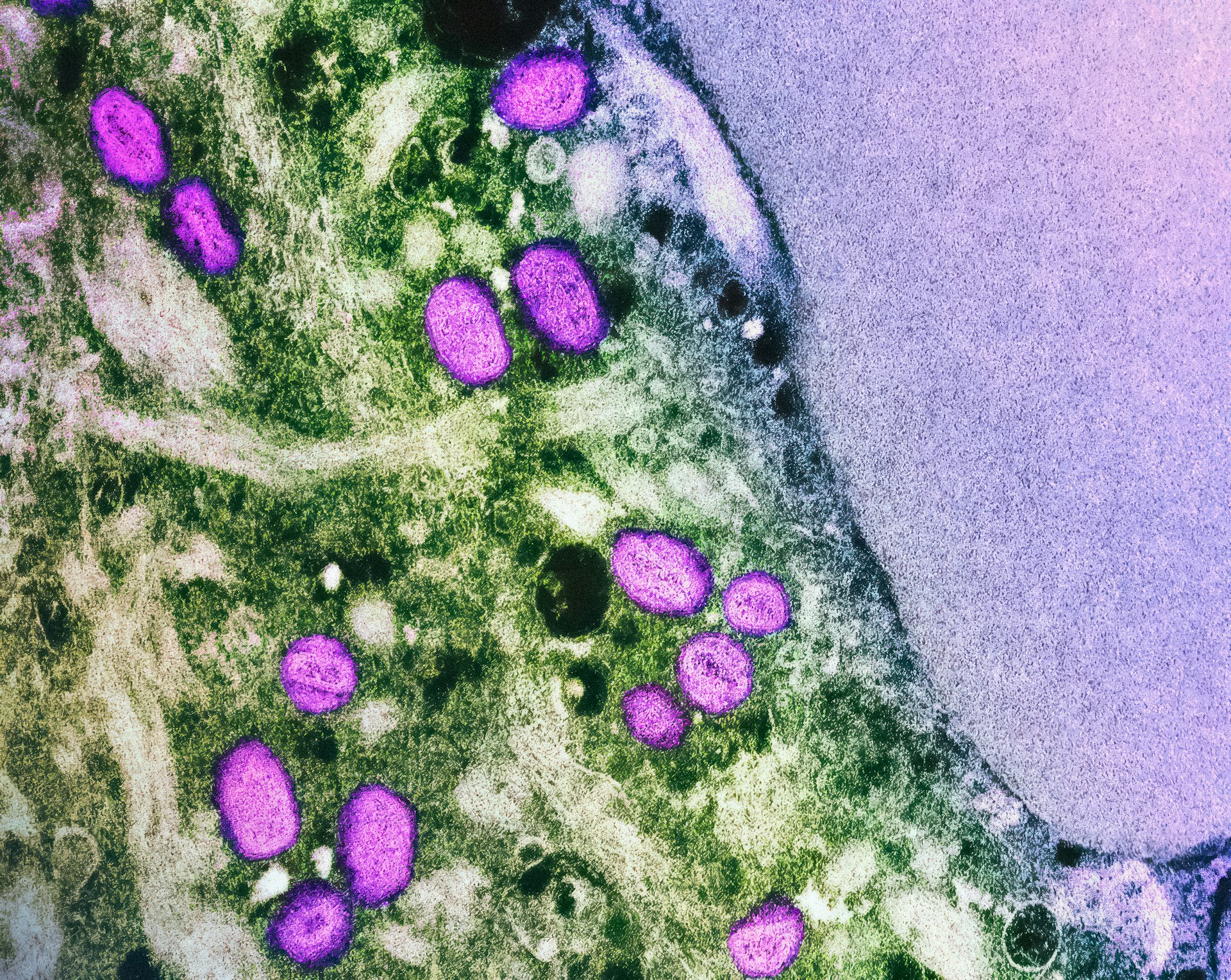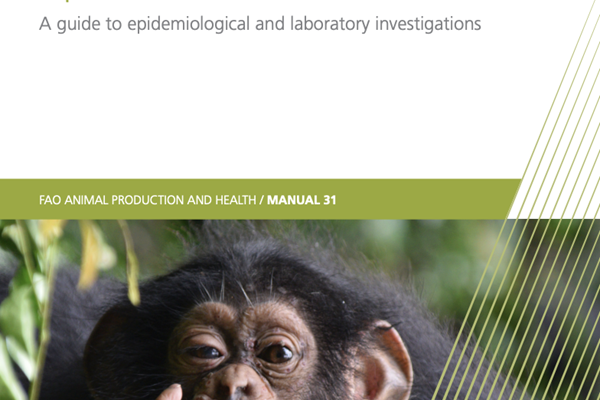FAO’s role in tackling mpox: A One Health approach to addressing emerging zoonoses

Colorized transmission electron micrograph of mpox virus particles (pink/purple) found within an infected cell (green), cultured in the laboratory. Credit: NIAID
FAO has intensified its efforts to combat mpox, an emerging zoonotic disease of global concern. In promoting One Health, FAO collaborates with governments, international organizations, and research institutes to mitigate risks associated with diseases that affect humans, animals, and ecosystems. Mpox exemplifies these interconnected threats, as it spreads at the human-animal-environment interface.
Recent discussions and research have emphasized the importance of proactive strategies to address the growing challenge posed by mpox. FAO’s initiatives aim to strengthen national capacities for surveillance, diagnostics, and response to prevent outbreaks and minimize their impact.
Challenges and insights
Mpox re-emergence is linked to waning immunity from discontinued smallpox vaccination programmes and high-risk behaviours such as wildlife trade and bushmeat consumption. This highlights the critical need for integrated strategies that focus on prevention at the source - both human and animal populations. Additionally, gaps in understanding mpox’s transmission dynamics in wildlife and domestic animals underscore the necessity for robust research and surveillance systems.
Key recommendations
FAO, drawing from expert insights and collaborative input, has outlined several recommendations to enhance preparedness and response:
Enhancing surveillance of mpox in animals: Strengthening animal health systems to monitor Mpox transmission is crucial for identifying potential zoonotic risks early. FAO advocates for more detailed research on wildlife reservoirs, modes of transmission, and the role of domestic animals in disease spread.
Strengthening veterinary services: The capacity of veterinary services must be enhanced to prevent and manage zoonotic diseases effectively. Training and equipping veterinary professionals are key to ensuring effective prevention at source and early detection through surveillance and laboratory diagnostics of emerging threats.
Cross-sectoral collaboration: Mpox’s zoonotic nature necessitates collaboration among human health, animal health, and environmental sectors. FAO works with partners like WHO and the World Organisation for Animal Health (WOAH) to foster coordinated responses.
Improving laboratory diagnostic capacities: Reliable diagnostics are a cornerstone of disease control. FAO supports countries in upgrading laboratory facilities to ensure accurate detection of Mpox in animals, which aids in timely decision-making.
Regulating wildlife trade: Unregulated wildlife trade poses significant risks for zoonotic disease spillovers. FAO encourages governments to strengthen national policies and governance to mitigate these risks, including through community engagement and risk communications, while preserving biodiversity.
FAO’s collaborative efforts
FAO’s partnership with the Pandemic Fund provides resources for building comprehensive preparedness systems. The organization also collaborates with international stakeholders, including WHO and WOAH, to share knowledge, conduct research, and implement evidence-based solutions.
In Central and West Africa, where mpox is endemic, FAO supports initiatives to strengthen surveillance and community awareness. For example, FAO works with national governments in Burundi, the Democratic Republic of Congo (DRC), Rwanda and Uganda to strengthen prevention and preparedness capacities to mitigate the risk of mpox. These efforts are crucial in regions where the proximity of humans to wildlife increases the likelihood of spillover events.
The path forward
FAO’s commitment to the One Health approach ensures that mpox is addressed as part of a broader strategy to tackle zoonotic diseases. By bridging gaps in early detection, enhancing cross-sectoral collaboration, and building capacity at the national level, FAO continues to lead efforts to reduce zoonotic disease risks and protect public health and livelihoods.
With the global push to eliminate mpox and similar threats, FAO’s work highlights the importance of multi-sectoral collaboration, knowledge generation and sharing, community engagement and risk communication and technical capacity development through sustained investment in One Health systems. As zoonotic diseases remain a pressing challenge, FAO’s initiatives serve as a model for integrated and collaborative approach for preventing future pandemic threats.

